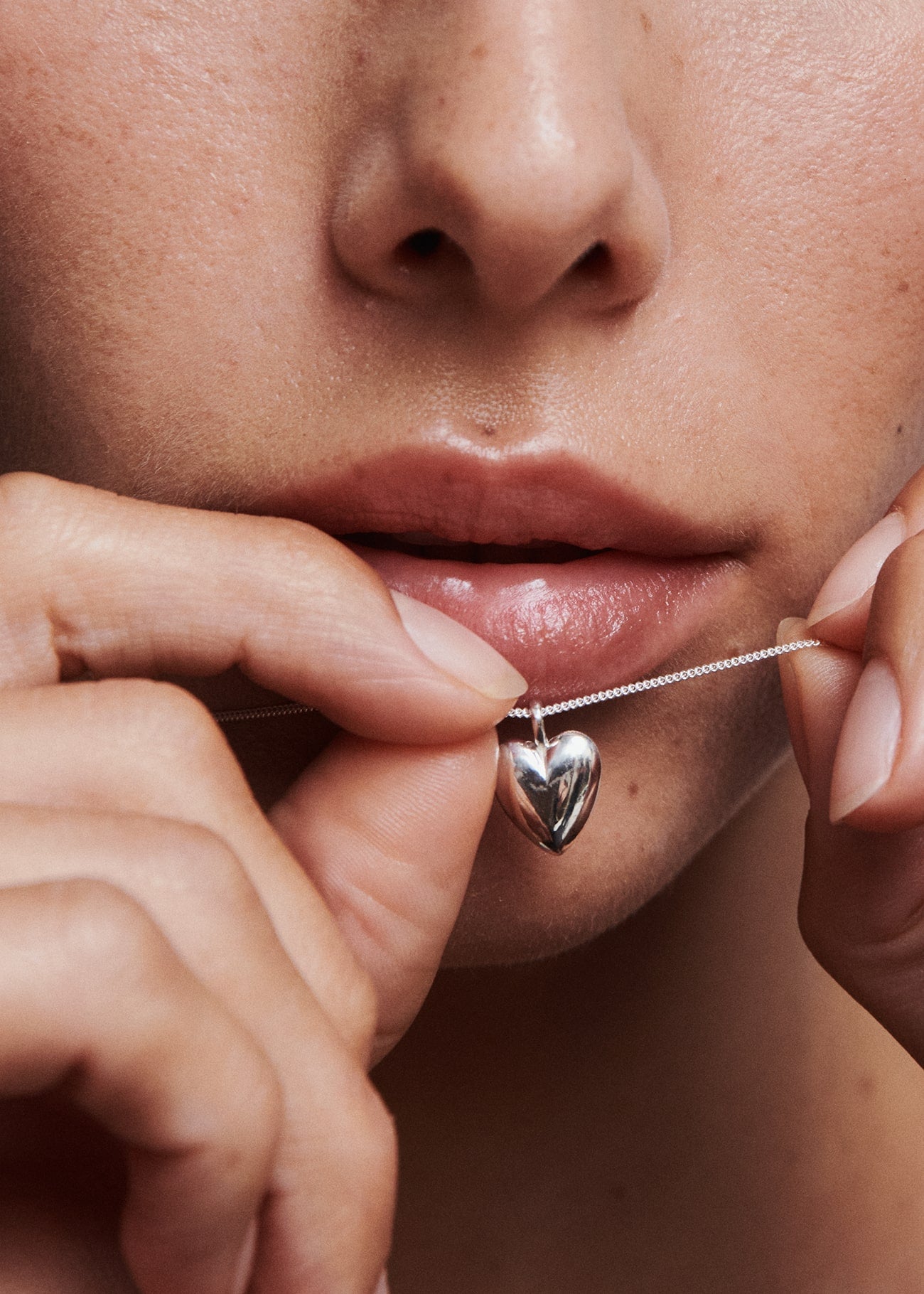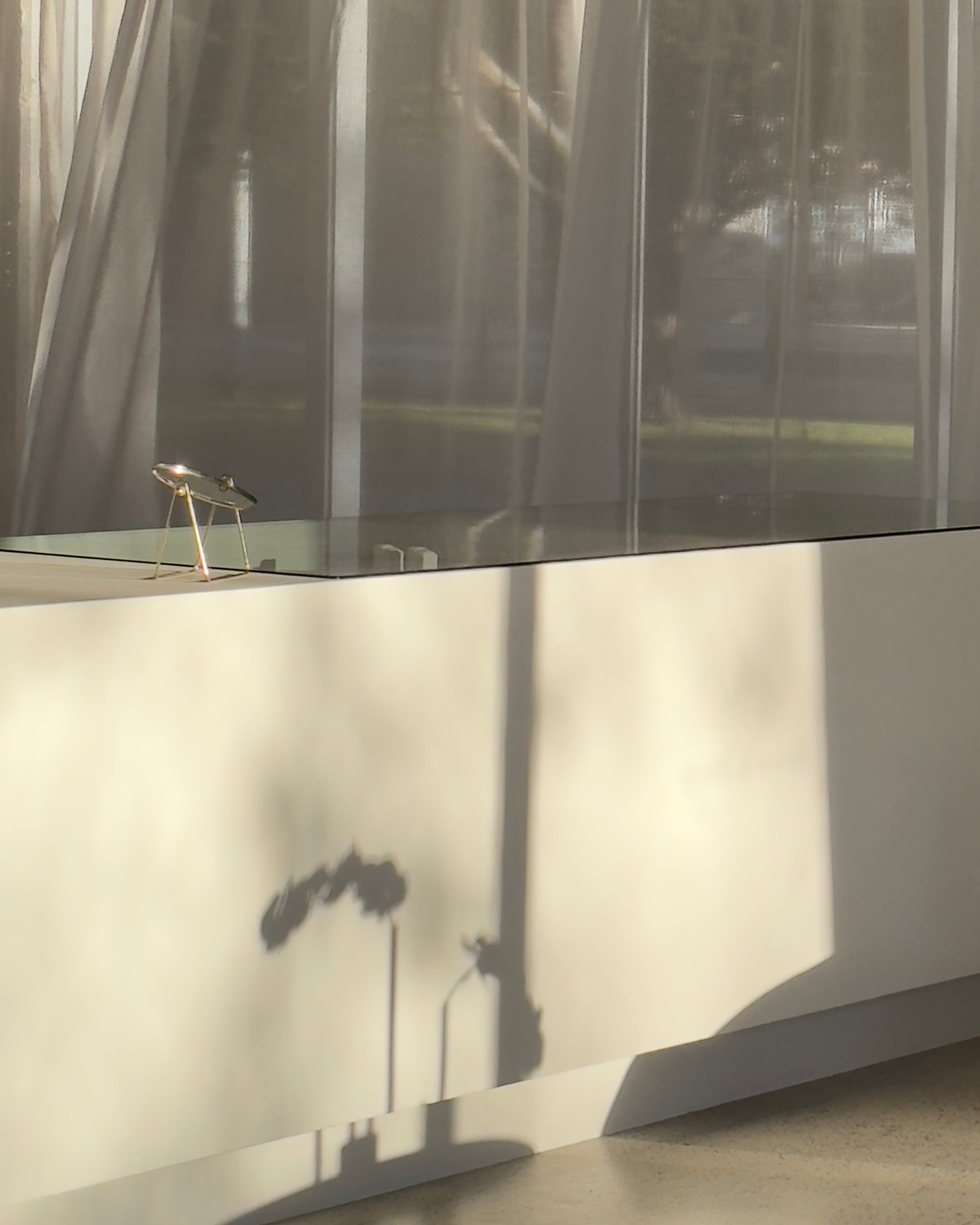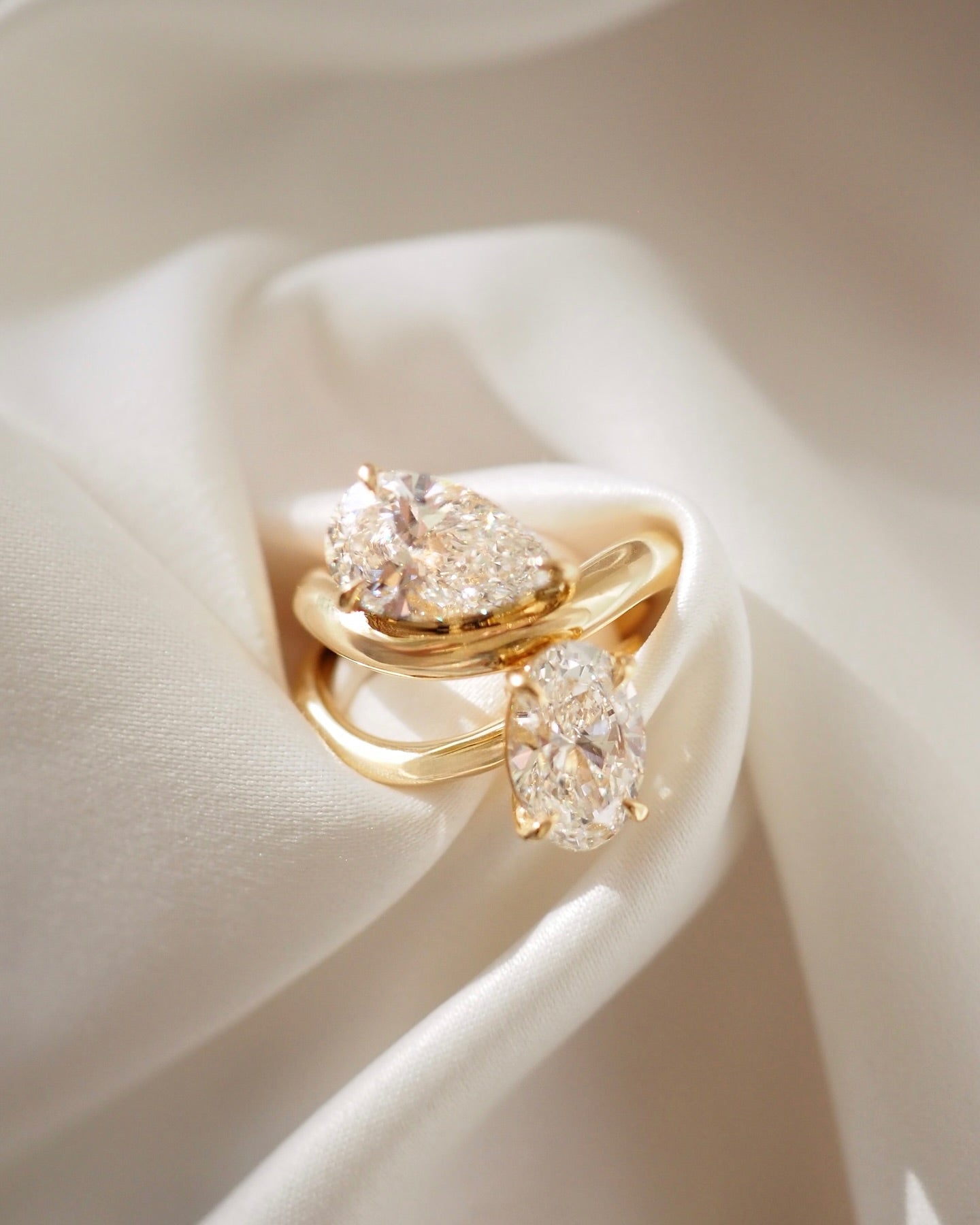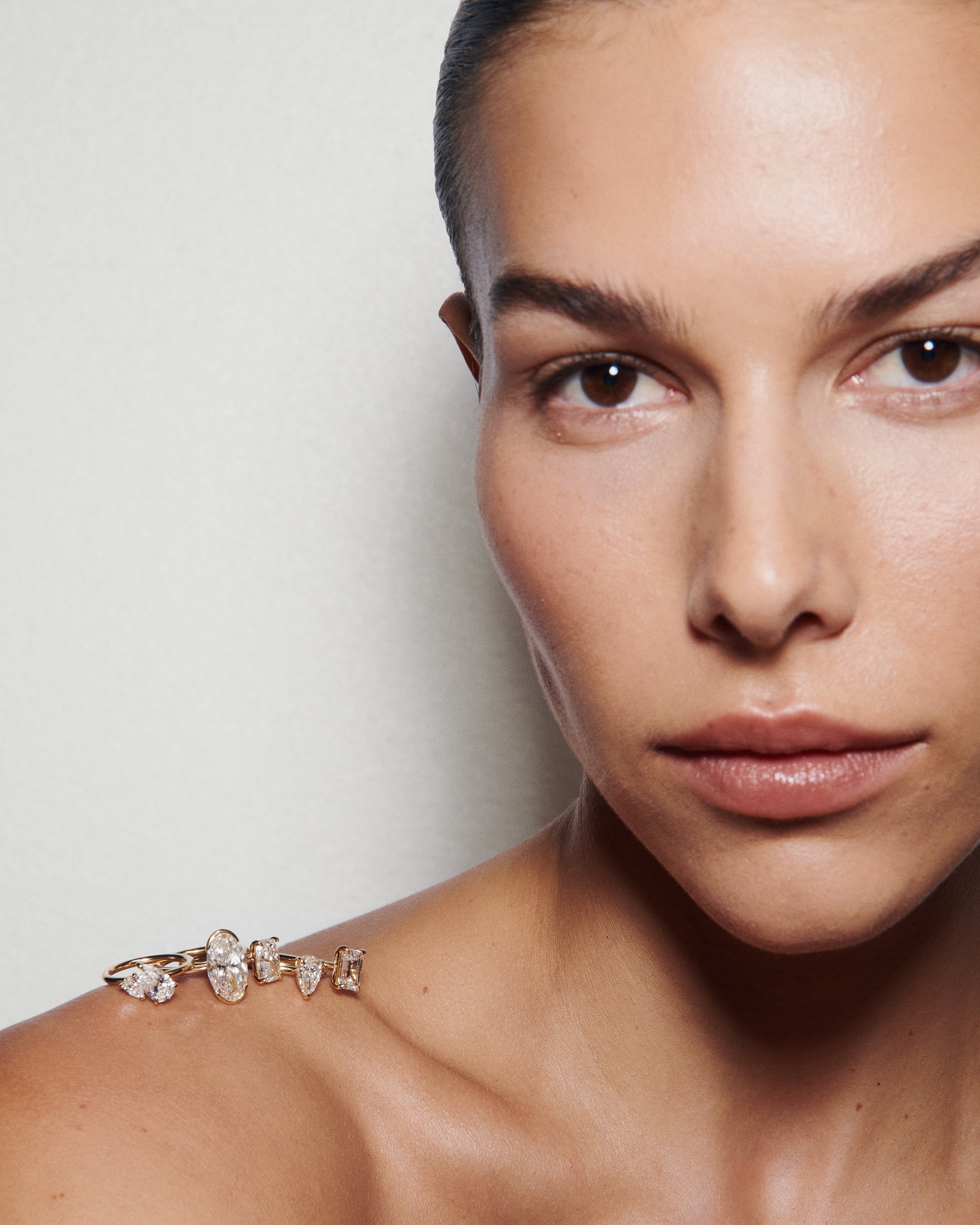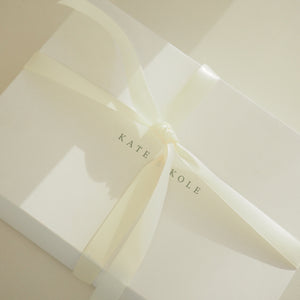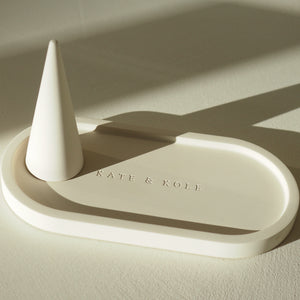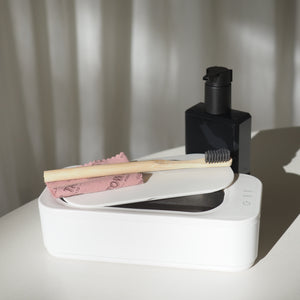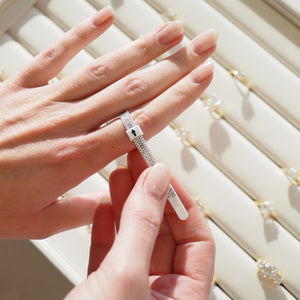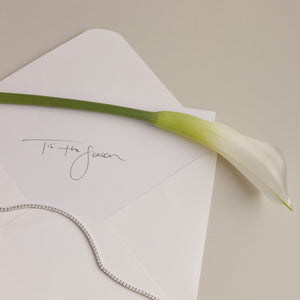Picking a stone for your engagement ring can be tough. With some many gorgeous stones out there, how do you choose the right stone?
Some questions to ask yourself (and your partner) before you get started are:
1. Is a diamond important?
If yes, you're looking to choose between a natural or lab grown diamond. If no....
2. Do we want a clear stone?
If yes, a White Sapphire or Moissanite are both perfect options and come with a lower price tag to a natural or lab diamond. If no...
3. Are there any stones that are special to us? Is a stone that's found in Australia important? An opal may be the stone for you. Does your babe adore the ocean? Perhaps a pearl is the perfect alternative.
If you're ready to talk to us about choosing a stone that's perfect for you, contact us to start designing your ring.

Diamond Natural
The four C'S
Cut, Color, Clarity and Carat
The first C is for Cut. It refers to the quality of the diamond’s cut and not to the shape of the diamond itself. The diamond’s value on this factor will be determined by the facets sizes, if they are all from equal sizes, if the round diamond is perfectly rounded, if everything is perfectly in place or if they are not aligned and so on. The cut is also what makes the diamond brightness.
The second C will be for the Color. As you may know there are multiple colors of diamonds. To measure the diamond’s color, colors are grated on a scale from D to Z. Colors grated D being the most lucid and colorless diamond and Z being yellow or brown colored diamonds.
The Clarity of the diamond refers the appearance of inclusions within the diamond or on it. The clarity rating are as follows: FL, IF, VVS1, VVS2, VS1, VS2, SI1, SI2, I1, I2.
The diamond’s carat corresponds to his weight. Usually people think the bigger weight the bigger diamond. But in some cases, this is not the truth. In fact, the cut of the diamond has an effect on its weight. The weight of a diamond is very important since this is what the price of the diamond will be based on.
Which C is the most important of the four ?
For many professionals, the cut is the most important C of the 4 C’s. When a diamond is accurately cut, it will hide marks and will cause the diamond to pop and sparkle brilliantly.
Diamond Lab-grown
To understand how lab-grown diamonds are made, we need to learn how natural diamonds appeared on the Earth's surface.
Mined Diamonds Geologists believe that natural diamonds formed deep within the Earth between 1 billion to 3 billion years ago. While they don’t know exactly how those diamonds came to be, they believe the process starts with carbon dioxide that is buried roughly 100 miles beneath the Earth’s surface.
The carbon dioxide is exposed to heat in excess of 2,200 degrees Fahrenheit and put under extreme pressure of roughly 727,000 pounds per square inch. The diamonds are then transported from deep within the Earth’s core to the surface by way of deep volcanic explosions.
There are two ways to grown diamonds in lab : The High Pressure High Temperature (HPHT) and The Chemical Vapor Deposition.
Just as the natural diamonds, lab-grown diamonds are grated with the 4 C’s.
In addition, lab-grown have multiple benefits. First, they are cheaper. The price difference between a natural diamond and a lab-grown diamond is due to the supply chain. A mined diamond will have a longer supply chain so it costs more than a lab-grown diamond.
Purchasing a lab-grown diamond is also ethical. Lab-grown diamonds can provide a peace of mind since you will know the exact origin of the piece you will buy.
Lab-grown diamonds are have a lower environmental impact. It takes less energy to grown a diamond than it does to mine one.
White Sapphire
White sapphire is a popular choice for the customer who wants a precious, clear, and white stone that is natural and valuable in its own right. White sapphire stands on its own as a diamond alternative, offering the sapphire’s reputation and allure at an economical price.
Care
Sapphires are rated “excellent” for everyday wear. Avoid exposure to heat and contact with chemicals. To clean, gently scrub with a soft toothbrush and a solution of mild dish soap and warm water, or clean in an at-home ultrasonic unit.
Major Sources
Australia, Cambodia, East Africa, India, Madagascar, Myanmar, Sri Lanka, Thailand, United States
Pearl
Long ago, people believed that pearls were moonbeams that fell into the ocean and were swallowed by oysters. Although we now know that this is not true, pearls are still synonymous with romance, purity and sensuality.
Natural Pearls
Before the depletion of natural pearl beds about 100 years ago, all pearls discovered were natural pearls. Today they are very rare and are often traded at auctions in New York, London and other places as investment pieces. Natural pearls are by definition all types of pearls formed by an accident, without human intervention; there is no implanted nucleus! Natural pearls are the product of chance, whose beginning lie in a piece of organic matter or shell entering the oyster. With no shell sphere as its nucleus, natural pearls are rarely round or uniform in size.
Cultured Pearls
Koichi Mikimoto, the son of a Japanese noodle maker, who is largely attributed with developing methods for culturing pearls, is considered the founder of the pearl culturing industry. Since this revolutionary breakthrough at the beginning of the 20th Century, an empire of pearl producing centres have developed around the world.
Cultured pearls are formed when humans intentionally introduced an irritant into the oyster. Most of the pearls today are cultured pearls.
Moissanite
It's been over twenty years since Charles & Colvard® created the world's first gem-quality moissanite. Artfully crafted, this ethical, socially responsible gem is the one choice for eternal brilliance.
Care
Moissanite is rated “good” for everyday wear. To clean, gently scrub with a soft toothbrush and a solution of mild dish soap and warm water, or clean in an at-home ultrasonic unit.
Morganite
This gorgeous pale pink to peachy pink beryl is a cousin of emerald and aquamarine. In smaller sizes, morganite has a delicate look. Larger stones have a richer shade for a bold, sophisticated look. Morganite reduces stress, stimulates calm, brings wisdom, and gives purpose to our lives.
Care
Morganite is rated “good” for everyday wear. Avoid exposure to heat, contact with chemicals, and protect from scratches and harsh blows. To clean, gently scrub with a soft toothbrush and a solution of mild dish soap and warm water.
Major Sources
Afganistan, Brazil, Madagascar, United States
Ruby
For thousands of years, royalty and the wealthy have coveted ruby. Its mesmerizing hue inspires passion, love, courage, and devotion while guarding the owner’s wealth and rank. Large rubies are extraordinarily rare and command prices that rival the finest large diamonds. It is July's birthstone and has the prestige of celebrating the 40th wedding anniversary.
Care
Rubies are rated “excellent” for everyday wear. Avoid exposure to heat and contact with chemicals. To clean, gently scrub with a soft toothbrush and a solution of mild dish soap and warm water, or clean in an at-home ultrasonic unit.
Major Sources
Afganistan, Cambodia, India, Kenya, Madagascar, Myanmar, Pakistan, Sri Lanka, Tanzania, Thailand
White Opal
October’s birthstone, opal is a magical, almost otherworldly gem. Once thought to include the colors of all precious stones, opals possess uncanny powers for a variety of cultures. Dangled as a hypnotic talisman or powdered into a compound to instill invisibility, opals, in one way or another, were and are bewitching and mysterious.
Care
Opal is rated “fair” for everyday wear. Avoid exposure to heat, contact with chemicals, and protect from scratches and harsh blows. To clean, gently scrub with a soft toothbrush and a solution of mild dish soap and warm water, or clean in an at-home ultrasonic unit.
Major Sources
Australia
Emerald
The name emerald finds its root in a Sanskrit word, marakata, meaning the green of growing things. Is it any surprise that we embrace its hue at the height of spring as May’s birthstone? Emerald symbolizes vitality, honesty, and fidelity making it the perfect choice for the 35th wedding anniversary.
Care
Emerald is rated “fair to good” for everyday wear with care. Avoid exposure to heat, contact with chemicals, and protect from scratches and harsh blows. To clean, gently scrub with a soft toothbrush and a solution of mild dish soap and warm water.
Major Sources
Afganistan, Brazil, Columbia, India, Pakistan, Russia, Zambia, Zimbabwe
Alexandrite
Blue green by daylight and purple red by incandescent light, Alexandrite’s bewitching beauty fascinates us. Much sought after, fine quality stones over three carats are increasingly rare. Alexandrite promotes emotional balance, creativity, and imagination. It is June’s birthstones and honors the 55th wedding anniversary.
Care
Alexandrite is rated “excellent” for everyday wear. To clean, gently scrub with a soft toothbrush and a solution of mild dish soap and warm water.
Major Sources
Brazil, Madagascar, Russia, Sri Lanka
Aquamarine
Named for the waters of Antiquity, aquamarine exerts a powerful allure. It draws its strength from the popularity of its pale blue hue, similar to the clear sky on a summer day. March’s birthstone promotes calm, spirituality, and mental clarity. Aquamarine celebrates the 16th and 19th wedding anniversaries.
Care
Aquamarine is rated “good” for everyday wear. Avoid exposure to heat, contact with chemicals, and protect from scratches and harsh blows. To clean, gently scrub with a soft toothbrush and a solution of mild dish soap and warm water.
Major Sources
Afganistan, Africa, China, India, Pakistan, Russia, South America
List of References
https://www.naturallycolored.com/diamond-education/diamond-grading/4cs-of-diamonds
https://www.cleanorigin.com/about-lab-created-diamonds/

